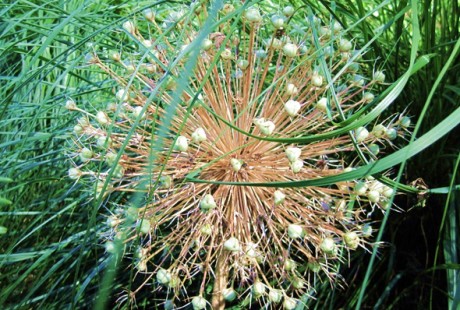garden planning for spring
Try following the four concepts below to make your garden planning experience more rewarding than ever. Your garden is a living entity and as such, always changing. That is part of its charm and its gift to the gardener.
Work with your garden
1. Define lacking areas. What are their characteristics? Too shady? Too dry? Hard to reach for regular maintenance? Soil deficiencies? Focus on improving them or adding plants that tolerate those conditions.
2. How much time do you have to spend in your garden? Plan on installing systems that provide continuous care with minimum of effort and cost (drip hose, xeriscaping, rain barrels, composting areas, etc.)
3. Observe what perennials are thriving in your garden. That will tell you a lot about the soil and draining conditions you have and offer potential for those plants to adjust very well in sparser areas of your garden. Plan on dividing mature plants that are overgrown to fill in the less fortunate spots.
4. Spend some time learning your sun paths. Find out when the sun reaches a certain area, not only throughout the day, but all year long. The sun’s elevation changes and growing vegetation make conditions in the same spot quite different between spring, summer and fall: you may be able to grow columbines and roses in the same flower bed. Pay extra attention to places in the shade, they offer great potential for cool summer retreats. White flowers are particularly striking in the shade.
5. Plan for naturally low-maintenance flower beds. A full flower bed won’t allow any space for weeds. Ground covers and low growing companion plants will look beautiful and reduce the need for mulching and watering. If the combinations are perennial, so much the better!
Define a recognizable style
1. Create and emphasize a theme for your garden. Focus all your future efforts into accenting that theme. Start with the classics: formal, romantic, cottage, rose garden, herb garden, potager. Figure out which one speaks to you and adapt the general structure to fit your conditions. Having a theme gives you a canvas to build upon and a very good idea about the kind of plants you could add.
2. Look at your garden from many angles and define visual lines, actual paths, points that focus your interest, blocks of color, surprises.
3. Make sure to have areas that can be enjoyed both from a distance and close up.
Add structure
1. Essentials:
o Hardscape – retaining walls, trellises, water basins, paving, arbors to grow climbers on, permanent benches, sun shading.
o Color accents – planting, garden furniture, sculpture.
o Access – flagstone pathways, stepping stones, grass paths. You want to be able to walk through your garden when it rains without getting covered in mud from head to toe.
2. Consider vertical planting and containers, especially if you don’t have a lot of land. Put extra effort in the areas where you spend most of your time. Make sure to include fragrant plants.
3. Add habitat for wildlife: bird baths, squirrel feeders, brush for shelter, bat boxes. Plant butterfly and hummingbird plants like dill, geranium and hibiscus.
4. Create private nooks for personal retreat: a little bench under a tree, sheltered from view by a planting of yews or a trellis of climbing roses.
5. Make your borders reachable, no more than five feet wide, with access from both sides. Areas that are difficult to reach will not be maintained or enjoyed.
6. If you have room, plant a cutting garden, if not sprinkle your flower beds with your cut flower favorites.
7. Add water in any form.
Your wish list
1. Make a wish list of plants you always wanted but never got. Sort through the reasons why and get any plants on the list that you can.
2. Would you like to add specific plants: medicinal, edibles, or fruit trees?
3. If you want a gazebo, a pergola or an arbor, stop dreaming about it and finally get it. It seems more complicated than it actually is.
4. Make your garden an inviting place. Add fruit and berries, plant butterfly and bee favorites, don’t forget scented herbs, have places to sit with a book, an Ipad or a Kindle, design little ledges to lay down a cup of coffee, etc.




 Previous Post
Previous Post Next Post
Next Post





This is cool. Thanks.
Hello, good post. Enjoy very much. Thank you.
Eh bien, vous parlez ici des choses qui me fait vraiment penser.
Where exactly is the facebook like button ?
If you open the post you were interested in and drag the picture you can share the post content on several social media.
hello all, I’m new on here and looking forward to being a part of the group.
welcome!
I just recently started searching for new blogs on proven garden plans. Many of my most usefull tools were located by just googling. Although this story was not exactly what I was expecting, It does have some quality hints!
My apologies for creating an off-topic comment, however I visit your blog often and wanted to leave an idea. Your website does not have a privacy policy which is important to let your visitors know that their personal information is safe when they are enjoying your posts.
Thank you for the comment. I’ll work something out.
Thanks for this interesting post. I will be sure to get the word out about this site 🙂 Excellent post. Can’t wait to see the next article.
When I originally commented I clicked the -Notify me when new comments are added- checkbox and now each time a comment is added I get four emails with the same comment. Is there any way you can remove me from that service? Thanks!
I’m sorry about the annoyance factor. I tried to post comments to understand what happened, but I can’t find the checkbox you were talking about. Could you please be a little more specific?
We just couldnt leave your website before letting you know that we really enjoyed the useful information you offer to your visitors… Will be back soon to check up on new stuff you post!